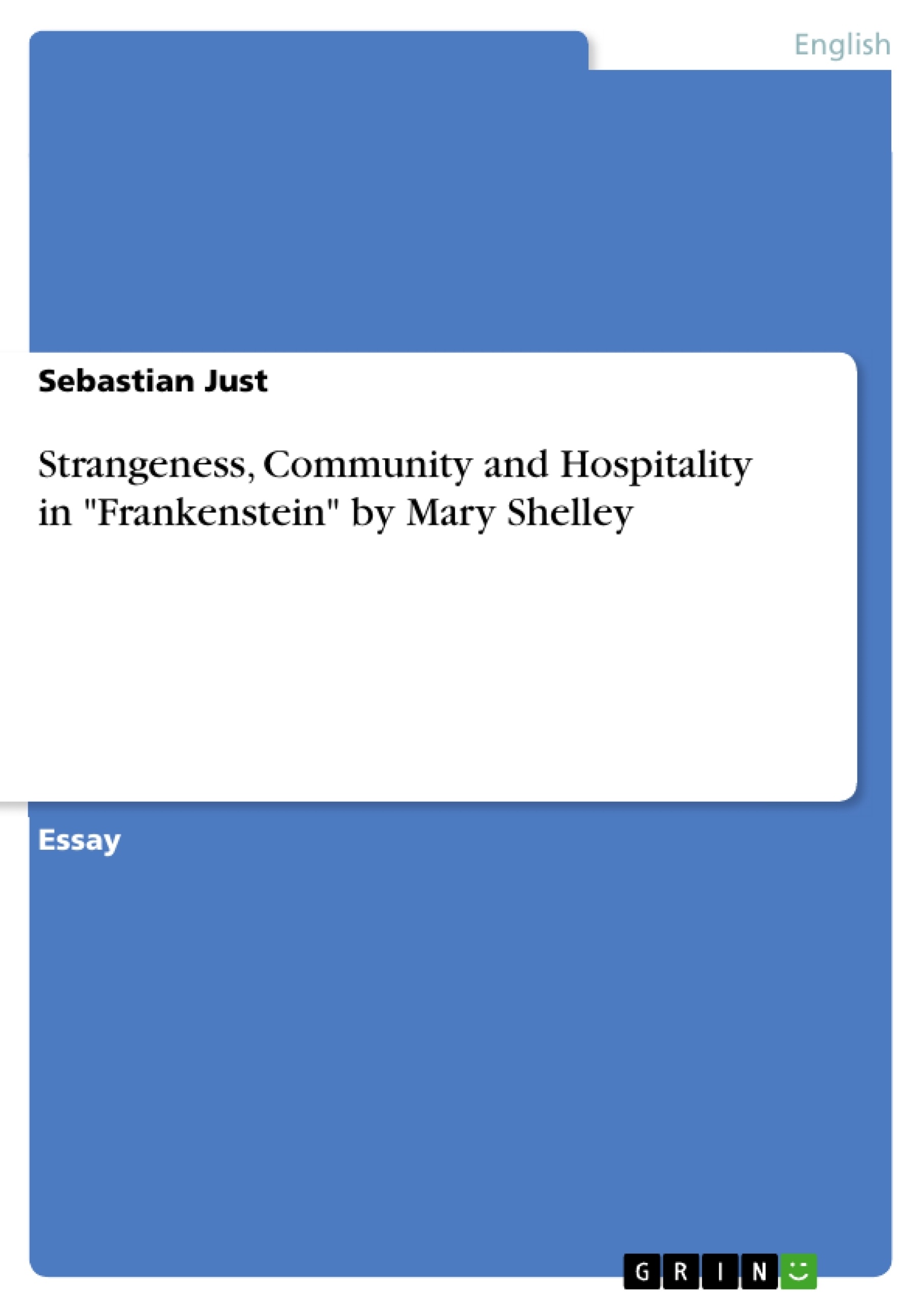In this essay I want to take a closer look at the social communities in Mary Shelley’s Frankenstein while especially considering the creature’s strangeness as a deciding factor in his confrontation with human society. When engaging in the social interactions of the Creature, I will also employ the idea of hospitality, which was shaped primarily by the French philosopher Jaques Derrida.
At first, I will look at how the creature is perceived by the other characters in the novel, focusing on the question what his monstrosity is based on. Then I will examine the creature’s attempts to join social communities, taking the DeLacey family as an example. Afterwards I will deal with the novel in relation to the idea of hospitality, which can be applied in Victor’s laboratory and in the DeLacey’s cottage.
Inhaltsverzeichnis (Table of Contents)
- Introduction
- "What was I?": The Creature and Monstrosity
- Affiliation and Community
- My Monstrous Guest
- Conclusion
Zielsetzung und Themenschwerpunkte (Objectives and Key Themes)
This essay aims to explore the social dynamics and interactions within Mary Shelley's Frankenstein, with a particular focus on the Creature's unique position as an outsider in a world built around human understanding. It examines the Creature's journey as a monstrous individual navigating societal expectations and rejection, investigating the role of monstrosity in shaping his experiences within human communities.
- The nature and impact of monstrosity in shaping social perception and acceptance
- The Creature's search for community and belonging in a world that shuns his difference
- The concept of hospitality as it relates to both Victor Frankenstein's creation of the Creature and the DeLacey family's encounter with him
- The consequences of unchecked scientific ambition and the responsibilities associated with creating life
- The themes of isolation, alienation, and the struggle for identity in a society that defines individuals based on perceived normalcy
Zusammenfassung der Kapitel (Chapter Summaries)
The introduction sets the stage for the essay by introducing the narrative of Frankenstein and highlighting the Creature's monstrous nature. It delves into Victor Frankenstein's ambition and his creation of the Creature, emphasizing the initial terror and subsequent rejection Victor feels towards his creation. It further examines the Creature's early experiences of isolation and loneliness, leading to his desire to understand and integrate into human society.
The second chapter focuses on the concept of monstrosity and how the Creature is perceived by other characters in the novel. It analyzes the Creature's physical appearance and the horror it evokes in Victor and other humans. It also explores the idea of monstrosity as a product of a failed interaction between nature and culture, arguing that the Creature's uniqueness makes him incomprehensible to human societal norms.
The third chapter delves into the Creature's attempts to form social connections and find a place within human communities. It uses the DeLacey family as an example, examining the Creature's interactions with them and their eventual rejection of him. This chapter explores the themes of isolation, alienation, and the Creature's desperate search for acceptance and belonging.
Schlüsselwörter (Keywords)
Key terms and themes explored in this essay include monstrosity, societal acceptance, the Creature's search for belonging, hospitality, Victor Frankenstein's scientific ambition, isolation, alienation, social perception, and the consequences of creating life.
- Citation du texte
- Sebastian Just (Auteur), 2020, Strangeness, Community and Hospitality in "Frankenstein" by Mary Shelley, Munich, GRIN Verlag, https://www.grin.com/document/1132856



